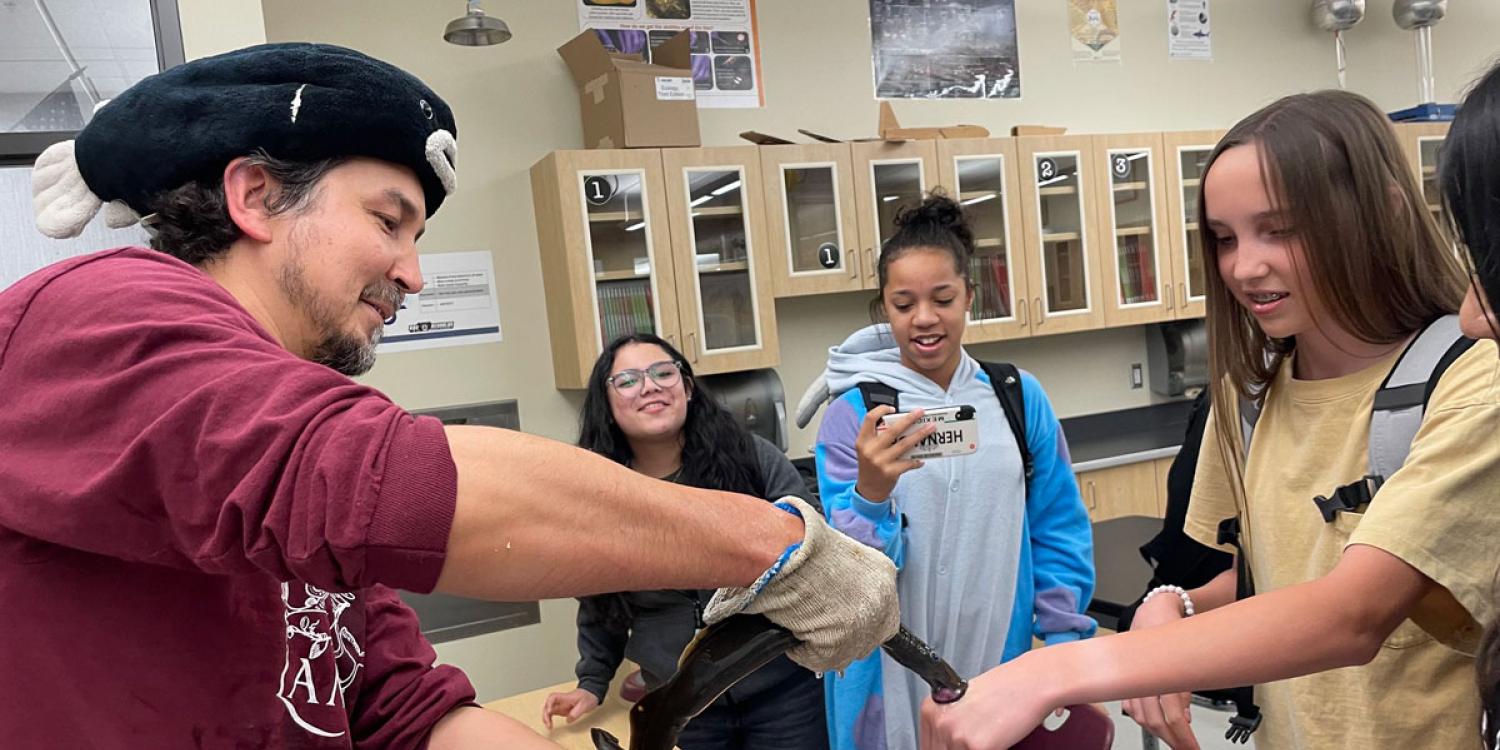
The Pacific lamprey, a threatened fish, is considered sacred by Pacific Northwest tribes and plays an important ecological and cultural role in the Pacific Northwest. Education is key to saving the lamprey, but until a few years ago, no Oregon school programs were in place to get the word out to the generations that will help conserve the ancient fish.
In response, Oregon State University Extension 4-H in the Portland area partnered with the Umatilla Tribes, the U.S. Fish and Wildlife Service and the Columbia River Intertribal Fish Commission to develop a multimedia curriculum for middle-school students. Using video, graphics and text, teachers engage students to learn about the lamprey and take action to save it. Recognizing how students learn, the course can be given on iPads or in a more traditional format. In addition to six educational modules, 4-H staff conduct presentations using live adult Pacific lamprey on loan from the Confederated Tribes of the Umatilla Indian Reservation.
The interactive activities raise awareness of the lamprey crisis and encourage kids to think like scientists, a desirable trait in an increasingly complex world. In addition, the new curriculum counts as a core standard in science. To share what they’ve learned, students in the program have hosted Pacific lamprey festivals.
The Pacific Lamprey in the Classroom program came to halt during the COVID-19 pandemic. But the program returned in 2021. The Umatilla Tribes and Confederated Tribes of the Umatilla Indian Reservation again loaned two adult lampreys to the Portland 4-H youth program to use for education. Fourth-grade students at the Cottonwood School of science and Civics, a 4-H Partner School, jumped at the chance to house and caretake for these two lampreys, which they named Eelmer and Crow. The fish were named after the late Elmer Crow, a Nez Perce tribal elder and fisheries worker who worked tirelessly to save the ancient fish from extinction.
When registration opened up to schools in early January 2022, teachers from 70 classrooms in grades four through 12 at 24 schools signed up within days to participate in the program. Nine-hundred students were registered. Twenty-six classrooms comprised of 528 students completed the five-unit curriculum and classroom presentation before the lamprey were returned to the Umatilla Tribes in early April.
In an end-of-program evaluation, 197 students reported significant improvement of their knowledge and awareness of Pacific lamprey.